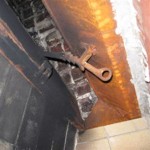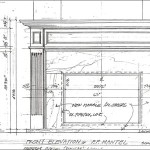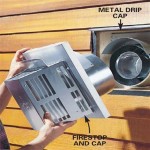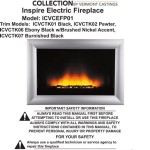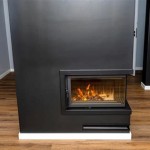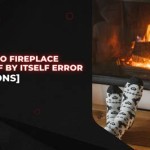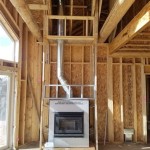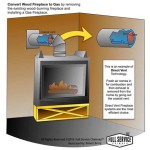Understanding Gas Vented Fireplaces: A Comprehensive Guide
Gas vented fireplaces offer a convenient and aesthetically pleasing alternative to traditional wood-burning fireplaces. They provide the ambiance and warmth of a fire without the mess and effort associated with wood. These fireplaces operate by burning natural gas or propane and require a venting system to exhaust the byproducts of combustion safely outside the dwelling.
The primary distinction between vented and ventless gas fireplaces lies in their exhaust systems. Vented fireplaces necessitate a direct route for fumes to escape, ensuring safe operation and preventing the buildup of harmful gases within the living space. Understanding the components, types, and installation considerations is crucial for anyone considering a gas vented fireplace.
Key Components of a Gas Vented Fireplace
A gas vented fireplace comprises several key components working in concert to provide heat and visual appeal. The burner assembly, which consists of the burner itself and the gas control valve, is responsible for igniting and regulating the flow of gas. The gas control valve is a critical safety feature, automatically shutting off the gas supply if the pilot light is extinguished or if other malfunctions occur.
The firebox encloses the burner assembly and houses the decorative elements, such as artificial logs, glass beads, or stones. These elements are designed to mimic the appearance of a real wood-burning fire. The venting system, arguably the most important component, is responsible for expelling exhaust gases outside. This system can be either a chimney or a direct vent system, depending on the fireplace type and building configuration. A control system, ranging from simple on/off switches to sophisticated remote controls with thermostat capabilities, allows users to manage the fireplace's operation.
Furthermore, a safety screen or glass panel is typically installed to prevent accidental contact with the flames, protecting occupants from burns. Some models are equipped with blowers that circulate warm air into the room, enhancing their heating efficiency.
Types of Gas Vented Fireplaces
Gas vented fireplaces are categorized based on their venting system. The two primary types are natural vent fireplaces and direct vent fireplaces.
Natural Vent Fireplaces (B-Vent): These fireplaces utilize an existing chimney or require the installation of one. They rely on natural draft, where hot combustion gases rise through the chimney due to buoyancy. The B-vent pipe (typically double-walled) is designed to ensure proper draft. Natural vent fireplaces are generally less expensive to install than direct vent models, provided a suitable chimney already exists. However, they may be less energy-efficient due to the potential for heat loss through the chimney.
Direct Vent Fireplaces: Direct vent fireplaces are designed for installation in areas where a traditional chimney is absent or impractical. They utilize a sealed combustion system, drawing air from outside the dwelling for combustion and expelling exhaust gases directly outdoors through a coaxial or concentric vent pipe. The coaxial vent pipe consists of two pipes, one inside the other. The inner pipe exhausts combustion gases, while the outer pipe draws in fresh air. Concentric vent pipes feature a similar design but with the intake and exhaust ports arranged side-by-side. Direct vent fireplaces are more energy-efficient than natural vent models because they do not rely on indoor air for combustion and minimize heat loss through the venting system. They also offer greater flexibility in terms of installation location, as they can vent horizontally through an exterior wall or vertically through the roof.
Installation Considerations for Gas Vented Fireplaces
Proper installation is paramount for the safe and efficient operation of a gas vented fireplace. It is strongly recommended that a qualified and certified professional handle the installation process.
The installation must comply with local building codes and regulations, which typically govern the venting system specifications, clearances to combustible materials, and gas line connections. The venting system must be installed according to the manufacturer's instructions, ensuring proper draft and preventing the leakage of exhaust gases into the living space. This includes maintaining the correct vent pipe diameter, slope, and termination height.
Gas line connections must be performed with meticulous care, using appropriate fittings and leak testing procedures to prevent gas leaks. The fireplace should be positioned in a location that provides adequate clearances to combustible materials, such as walls, ceilings, and furniture. These clearances are specified by the manufacturer and are critical for preventing fire hazards.
For direct vent fireplaces, the location of the vent termination must comply with minimum setbacks from windows, doors, and air intakes to prevent exhaust gases from re-entering the building. Regular inspection and maintenance are also crucial for the longevity and safety of gas vented fireplaces. This includes checking the venting system for obstructions or damage, cleaning the burner assembly, and inspecting the gas line connections for leaks. A carbon monoxide detector should be installed nearby to provide an early warning of any potential carbon monoxide buildup inside the dwelling.

Direct Vent Gas Fireplaces Fireplace

Napoleon Ascent Dx42 Direct Vent Gas Burning Fireplace

Freestanding High Efficiency Direct Vent Gas Fireplaces Inserts Stoves Godby Hearth And Home

How To Find The Most Efficient Direct Vent Gas Fireplace For Your Next Project

Vented Vs B Vent Direct Free Dixie S
Gas Fireplace Venting Explained Heat Glo

12 Types Of Gas Fireplaces You Need To Know

Hearth Home Technologies Khldvp600ptsc Hearthside

Majestic Direct Vent Gas Fireplace Quartz 36 Intellifire Touch Ignition System

What Are The Best Ways To Vent A Gas Fireplace Zoroast
Related Posts

